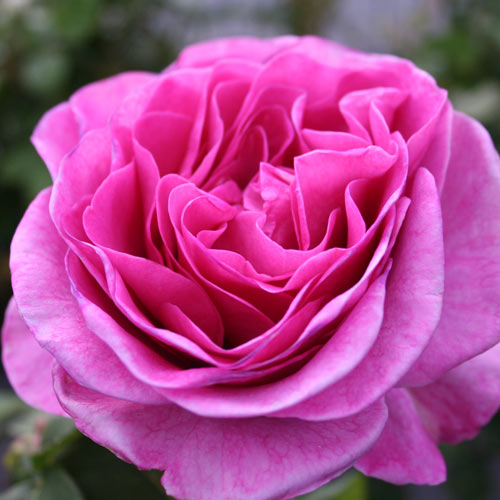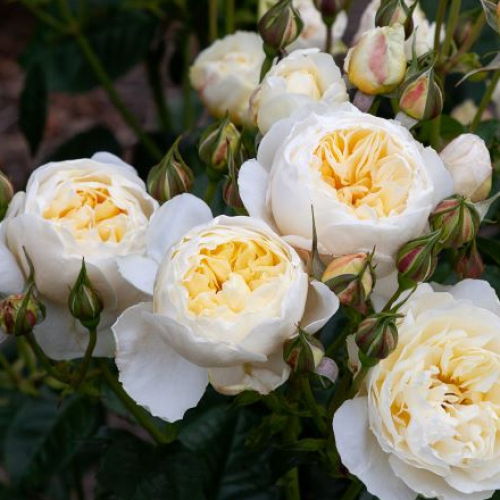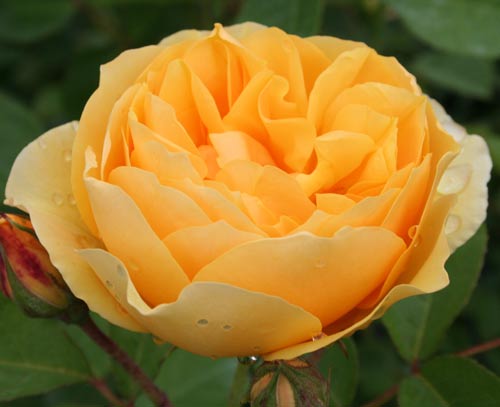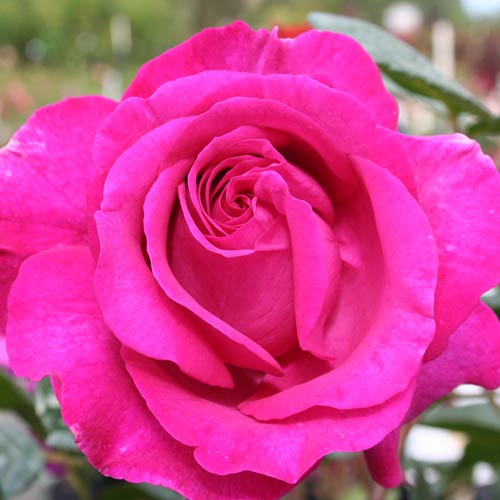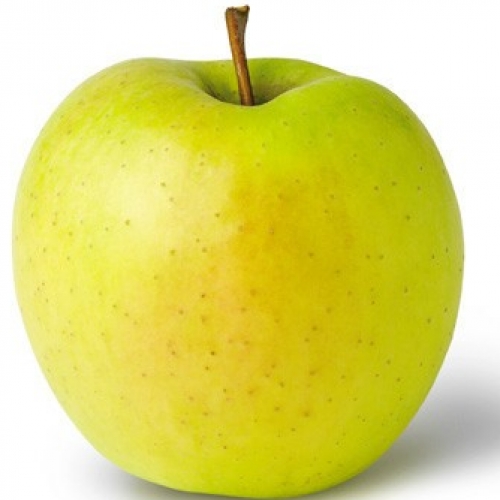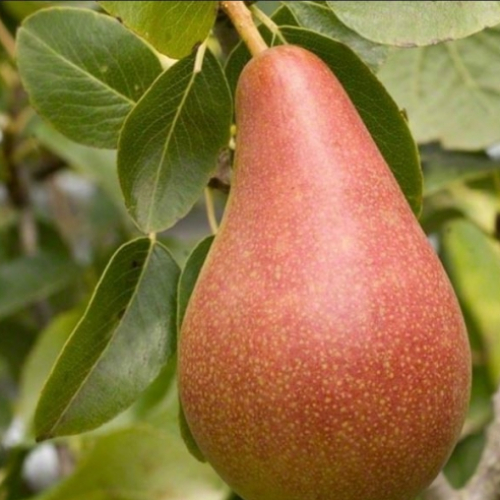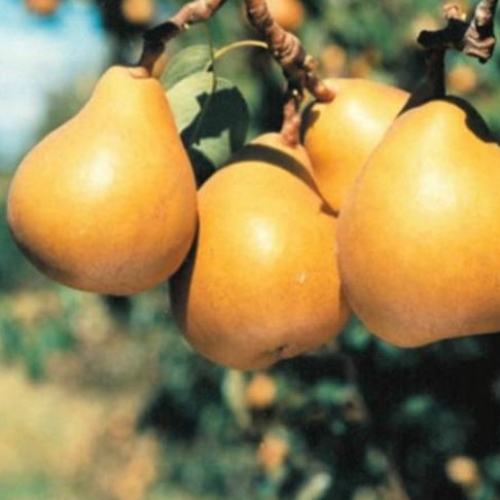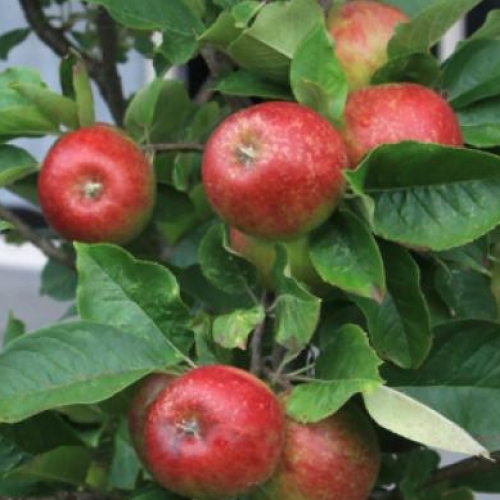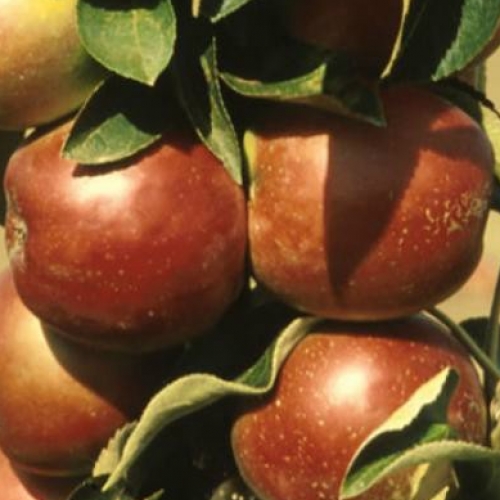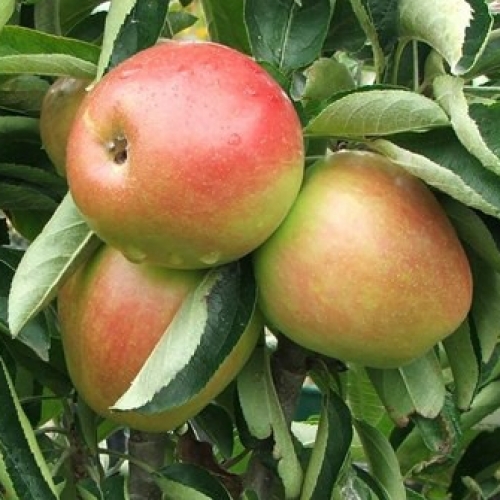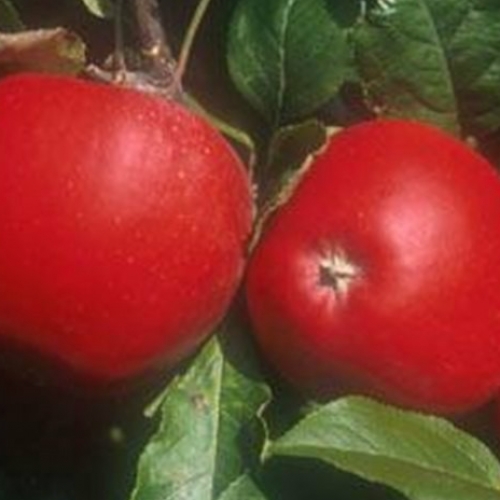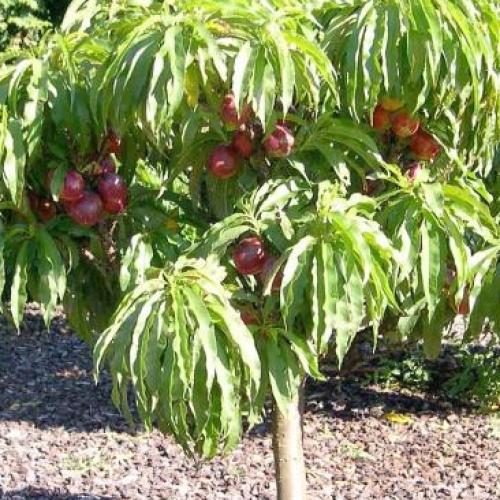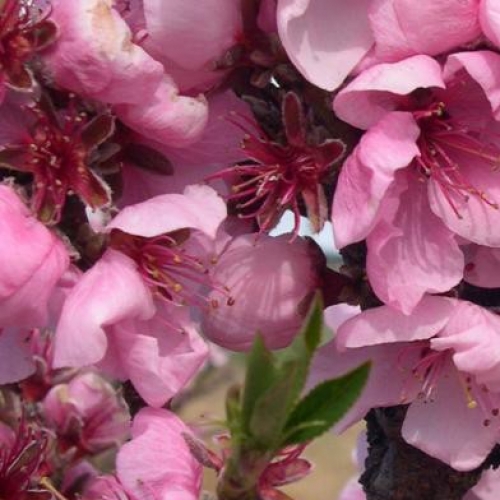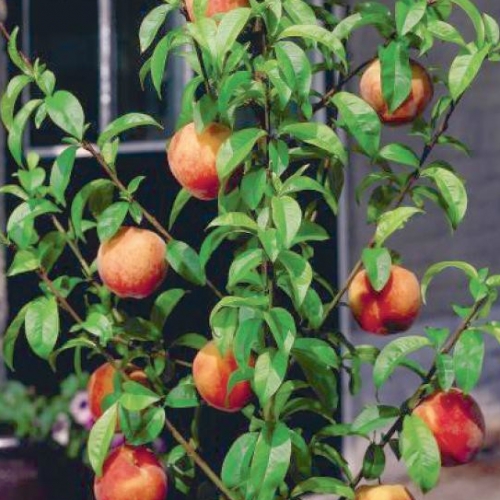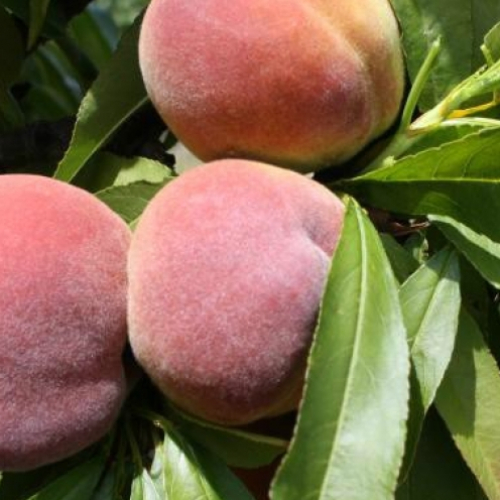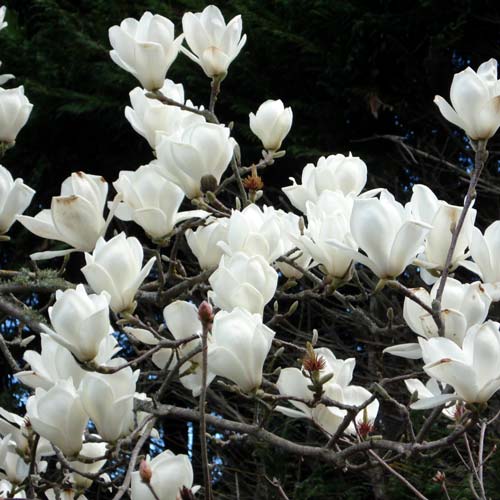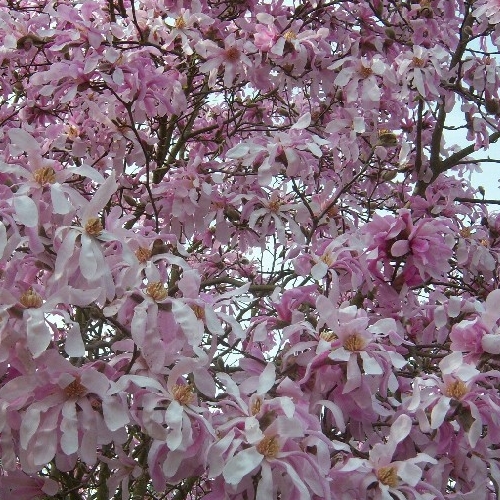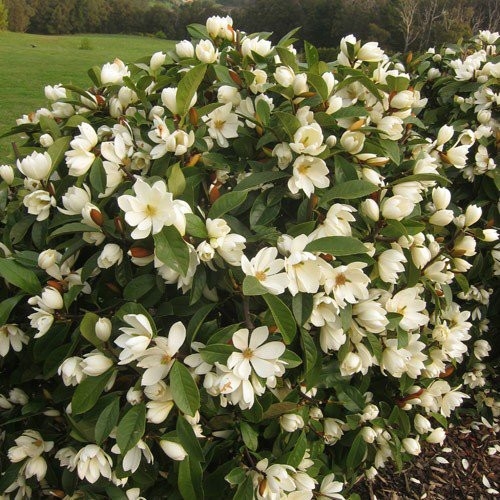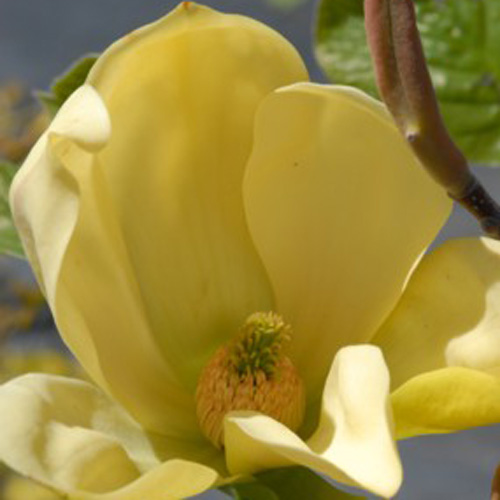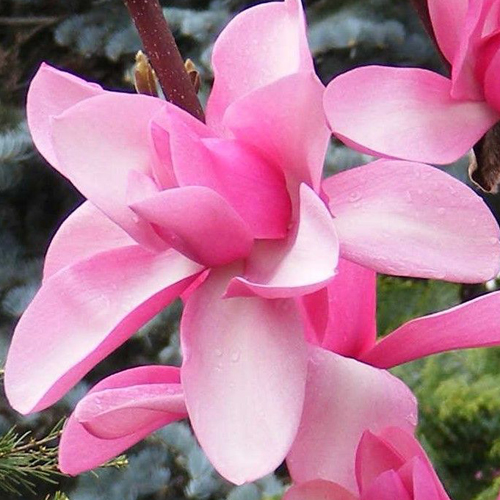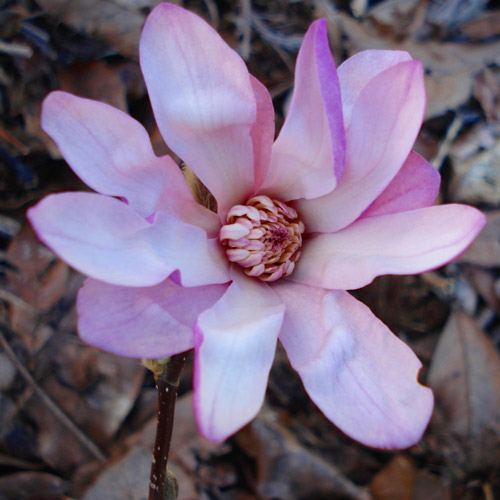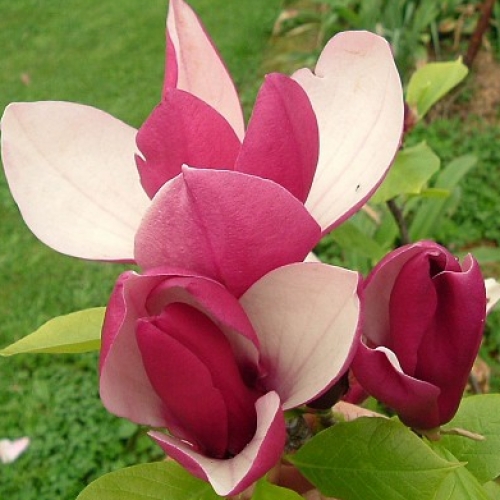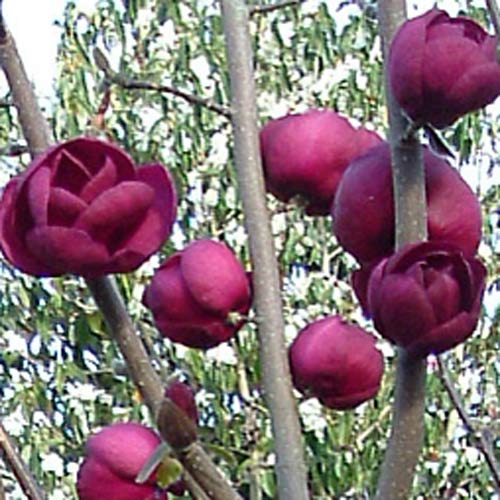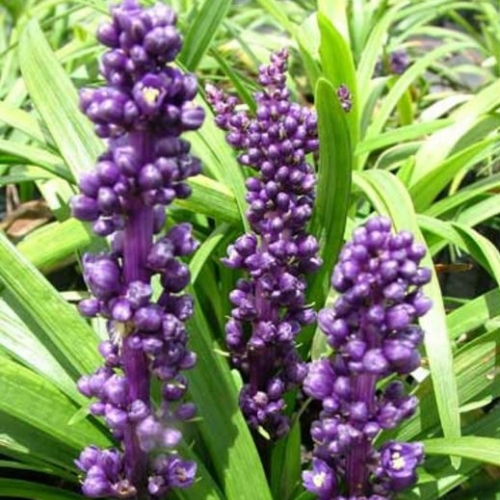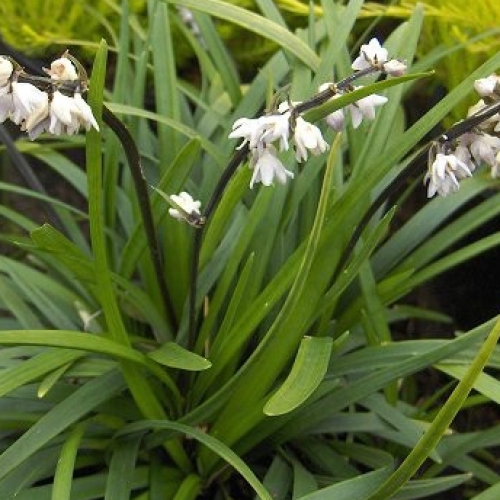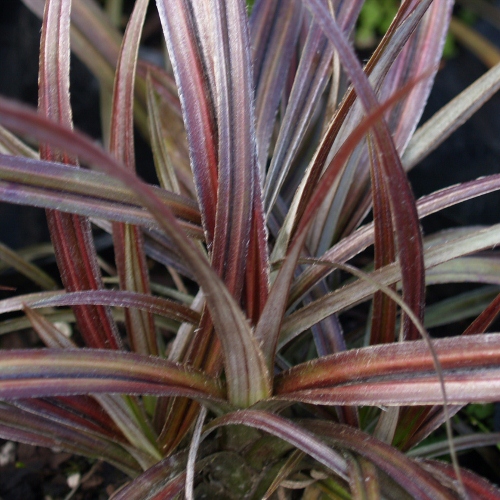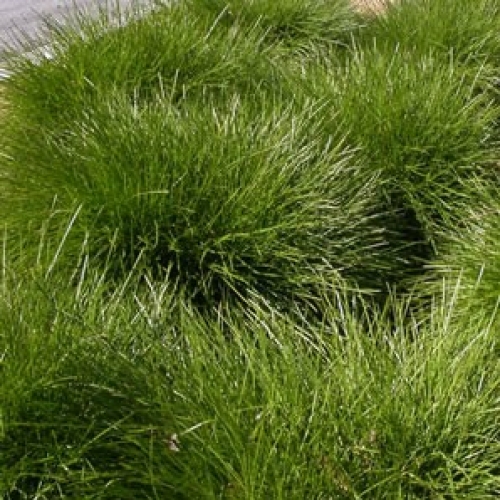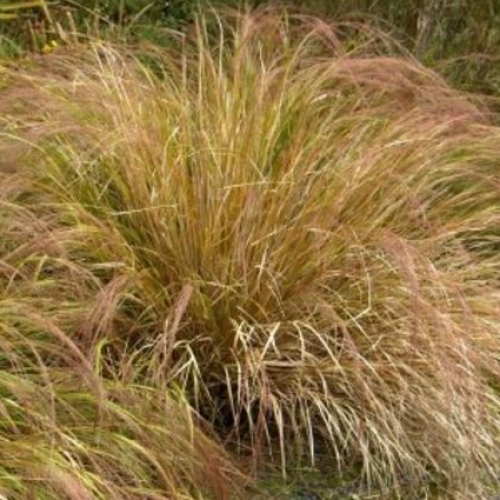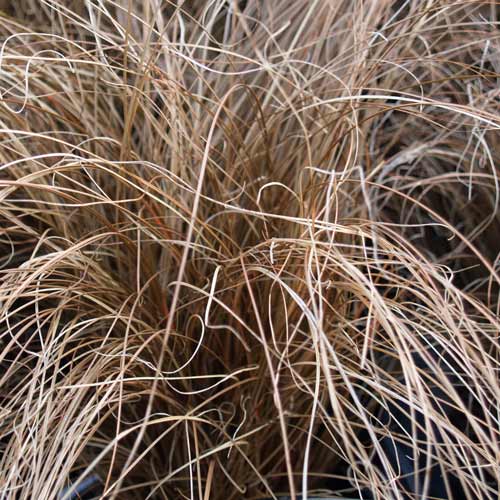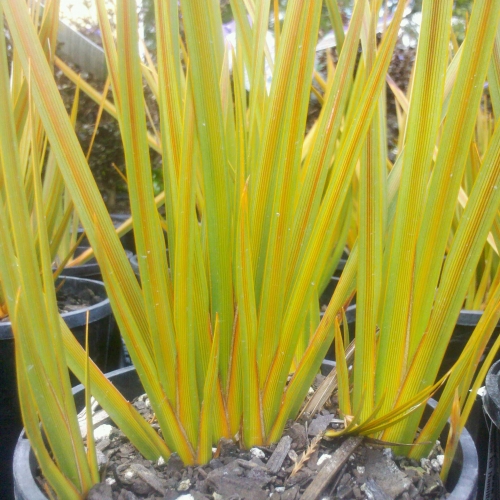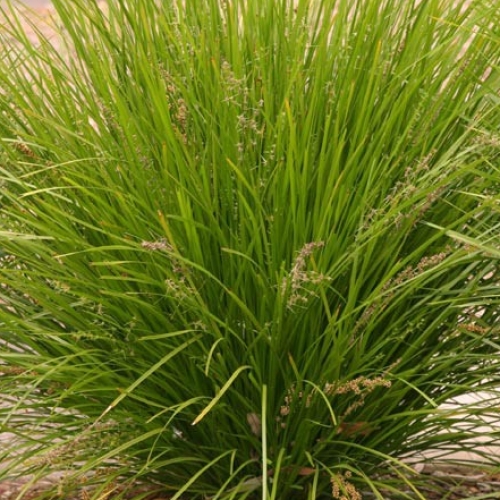Saturday 9th August, 2025
Hi
2025 Potting season ... It's a wrap
Thanks to Tracy for the last few weeks of great emails and for enabling me to be either down at the potting shed, root pruning and labelling, or bringing trees up into the garden centre. It's all but over for another year, except for a few random last minute tree deliveries that need potting. I think that it has been the quickest, most slickest rose and tree potting season ever, thanks to a great team who have all done it before, which makes a huge difference.
We now have all the
Roses spaced and in proper alphabetical order. This means that they have some air movement between them and when I spray I get way better coverage throughout. I think that all the
Fruit Trees (like
Apples,
Pears,
Peaches and
Plums) are now also in alphabetical order and that makes it much easier for both ourselves and our clients to find what we/they are after. Just the
Ornamental trees remain in need of being sorted into some logical order, and then we will be back to normal for another season.
Fruit trees for the smaller garden
It has to be said that here in NZ most fruit trees of the pip and stone kind will grow/mature to some 4 metres high and wide with some pruning. Now, Tracy mentioned last week that most of these trees fruit on the previous season's wood and knowing that fact means to some extent you can control the size of your trees. The easy exceptions are
Apples and
Pears which both fruit on spurs or whips making it way easier to control your tree height. Knowing which wood your trees fruit on also means that you can train them into espaliers, cordons and various other forms. But what if you don't have the space?
Apples and pears on dwarfing rootstock and trained as espaliers are a fab and easy way to save space as they can be against a wall and maintained back to that flat structure. This stops them encroaching forwards into your garden. If you are really keen, you could create a wall of cordons which are single stems with fruiting spurs. This way you get get in a large number of varieties which will mean a long season of fruit.
The smaller rootstock numbers e.g. M9, M26, mean a more dwarf influence but would possibly need a supporting structure, lending themselves to espalier work. Both look very cool in the winter when you see their structure for what it is. Cordon training involves having the branches on an angle, e.g. 45 degrees, along a wall and there are also other shape options (such as fan and lattice) which require a lot of time and patience but look amazing when completed.
Stone fruit like
Plums and
Peaches etc can also be fan trained, but this is where you really need to know what wood will fruit for you as it's all about the previous season and working on replacing wood that has done its job. See this
link for more information about how to Espalier.
Alternatives to espalier to save space
With apples there are other choices like the dwarf apple called
Blush Babe which is really just like a small topiary and would equally suit being in a pot or in the garden. I am particularly fond of the
Ballerina apples which grow as columns (being quite upright in form) and which suit a narrow garden and can be very useful as a key element in garden design. There are four eating apples to choose from being
Bolero,
Waltz,
Flamenco and
Polka. Then there is one called
Autento which apparently stores well in the fridge.
On the note of being like a small topiary, there is a range of
Peaches and
Nectarines which whilst grown on the usual golden queen rootstock are true dwarfs in their own right. This means that unlike other grafted trees it is not the rootstock dictating the height of the tree, but the scion wood or grafted top. There are quite a few to choose from and most have the bonus of looking really pretty when in blossom. At maturity these will be a head of approx. 1 metre round and would really suit being used like standard roses or container specimens. They produce a good amount of fruit for the size.
Magnolias
You could be mistaken for thinking that spring is here but is not officially until September at least. The Spring equinox is not until Sept. 23rd, so technically it's still winter. Tell that to the flowering cherry
Felix Jury which has been flowering over in the Bay for some weeks now and is in full bloom here at my place. It seems that the winter leaves have just fallen from this one. Felix Jury will definitely attract the tui to your place.
It's the
Magnolias that are being the stars right now in this early phase of spring, or the last weeks of winter. Deciduous magnolias tend to flower naked and
Denudata alba is one of the first off the ranks and always a fav with me with its icy white blooms.
Botanically,
Magnolias are interesting as they have been around since the era of dinosaurs and in fact predate bees. Thus we can assume that they must be pollinated by other insects. The most likely contenders are beetles since the female parts of the flower (know collectively as the carpel) are hardened to fend off the chewing mandible of beetles. In some magnolia species the carpel mimics male beetle bits in an attempt to lure in these pollinators.... LOL Life in the plant world is not too different. Talk about the birds and the bees (beetles).
The petals on Magnolia, which are called tepals, are a combo deal of sepals and petals. Tepals are thick and leathery, handy for a beetle to slide to the centre of the flower, and are deliciously fragrant due largely to citrus-scented linalool, which is a naturally occurring terpene alcohol found in the flowers. Magnolia flowers tend to be large and produce good quantities of pollen to attract the beetles for the hanky-panky part of the life cycle.
What else is interesting?
The timber from Magnolia trees has been used for furniture pallets and veneers. Traditional Chinese medicine used the bark and flowers for various remedies. In Victorian times the flowers represented dignity, nobility, poise and pride. All that aside, they make for pretty handsome garden trees that seem to herald in the spring with large beautiful flowers.
Grasses
Grasses are not as sexy, but are still a versatile and useful plant in the garden. Whether it's creating a massed effect of soft arching form, or an edging along a path or garden, grasses are great. There are a huge variety of types, colours and heights and so they work in many different situations. From formal gardens with
Liriope and
Mondo grass (Ophiopogon) to native areas with
Carex and
Astelia, or the modern classic of
Lomandra for hardy low maintenance. There is something for everyone in the "field" of grass.
Gossamer grass
Anemanthele lessoniana is perfect for creating the impression of movement on a bank or mass planted area.
Carex comans Red has a soft brown red flow,
Libertia peregrinans is great for adding a punch of colour with its bright orange winter growth and contrasts well with other green natives. You can't beat
Lomandra Lime Tuff for its tidy compact form and the bright lime green makes a statement in modern gardens with clean slick lines and bold colours.
There is always plenty to do in the garden and I need to get out there and spray all the weeds that have been neglected over the past two months. It's probably better to spray Round Up as the weather warms and growth returns as in the depths of winter the plant's metabolism is too slow. If, like me, you haven't already done so; then its time to get in and prune your
Roses and orchard
Fruit trees. Do this task in dry settled weather as rain can spread disease like silver leaf.
It's also in my plan to give my now 4-year-old asparagus patch a good feed of rich compost so that I can harvest a bumper crop this year coming. Speaking of Asparagus, the third variety we will stock this year (
Pacific Purple) has just arrived in. You can purchase it, along with the other two (green) varieties (
Pacific Challenger and
Pacific Endeavour)
online or in the nursery.
New season's roses that have been planted will need spraying with
Super shield to get them through this tricky period.
If you are like me then you will feel gardening in the wet is not so much fun, so I will probably wait until I have a nice fine spring day to do my outdoor garden chores. In the meantime, I will check out what additions and changes I am going to make for my home orchard.
Lastly, all that remains is that I wish you all a fabulous weekend.
Cheers from Lloyd, Tony and the Wairere team.
.jpg)
